Introduction
Nepal is rich in cultural diversity, where various religious and ethnic groups coexist harmoniously. The festivals celebrated across the country reflect this diversity, offering a vibrant mix of Hindu, Buddhist, and indigenous traditions. Throughout the year, Nepal hosts various festivals embodying unity, spirituality, and community.
For locals, these festivals are a time to celebrate with family, friends, and neighbours. Visitors offer a unique opportunity to witness or participate in colourful rituals, traditional music, and festive dances. Whether it’s the grand celebration of Dashain, the lights of the joyous festival of Tihar, or the spiritual observance of Buddha Jayanti, Nepal’s festivals provide unforgettable experiences, immersing travellers in its profound cultural heritage.
These celebrations are more than just religious events—they showcase the heart and soul of Nepali society, its traditions, and the connection people have with their environment. Whether you are planning to explore Nepal’s cultural festivals or want to learn more about its rich heritage, these celebrations offer a deeper understanding of the country’s values and beliefs.
Importance of Festivals in Nepal
a. Cultural Significance
Festivals in Nepal are not just annual events; they are vital to preserving and celebrating the nation’s rich cultural heritage. These cultural festivals are a way to keep traditions alive, passing them down from one generation to the next. Whether it’s Dashain, commemorating the triumph of good over evil, or Indra Jatra, honouring the god of rain, these celebrations reflect different communities’ deeply rooted beliefs and customs. People reinforce their cultural identity through rituals, songs, dances, and foods, ensuring Nepal’s unique traditions thrive.
b. Religious Unity
Nepal is home to two major religions—Hinduism and Buddhism—that coexist harmoniously. Many festivals blend aspects of both religions, fostering a spirit of unity and mutual respect among Nepalis of various faiths. For example, Buddha Jayanti, which celebrates the birth, enlightenment, and death of Gautama Buddha, is significant to both Hindus and Buddhists. Similarly, the festival of Tihar includes offerings to Hindu gods and goddesses while honouring crows, cows, oxen, and dogs, all of which are respected in both faiths. These shared celebrations strengthen the bond between different religious communities.
c. Social Gathering
Festivals also play a critical role in social harmony and community building. They provide opportunities for families and communities to come together, often after long separations due to work or migration. For instance, Dashain, Nepal’s largest festival, is when families reunite, perform rituals, share meals, and exchange blessings. Communal gatherings, such as street processions, feasts, and local fairs, also mark festivals. These celebrations foster a sense of belonging, encourage cooperation, and reinforce the social fabric of Nepalese society.
Major Festivals of Nepal
Nepal is a land of festivals, deeply embedded in the daily lives of its people. These celebrations vary from one community to another but often unite the nation in joyous festivities. Here’s a closer look at some of the most important festivals celebrated across Nepal:

Dashain is the most significant and widely celebrated Hindu festival in Nepal. It honours the victory of Goddess Durga over the demon Mahishasura, symbolising the triumph of good over evil. Dashain is deeply rooted in the Hindu religious tradition, but its cultural importance transcends religious boundaries, as people of different faiths also participate in the celebrations. The festival also reflects Nepal’s rural
culture, marking the end of the monsoon season and celebrating harvest time.
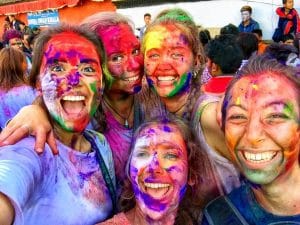
Holi, also known as Fagu Purnima, is the joyous festival of colours celebrated enthusiastically across Nepal and India. This vibrant festival marks the arrival of spring and the end of winter, symbolising new beginnings, joy, and the triumph of good over evil. Holi is deeply rooted in Hindu mythology, particularly the story of Holika, a demoness whose defeat signifies the victory of righteousness.

Tihar, known as Deepawali, is Nepal’s second most important festival after Dashain. It is a vibrant five-day festival of lights that celebrates the connection between humans and animals and the bond between siblings. Rooted in Hindu tradition, Tihar honours various deities, animals, and family relationships, mainly focusing on the relationship between brothers and sisters during Bhai Tika. The festival is also called the Nepalese Festival of Lights, resembling the celebration of Diwali in India.
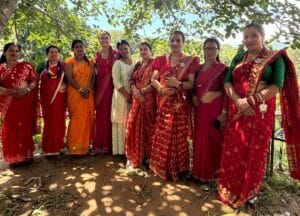
Teej is a vibrant women’s festival celebrated predominantly in Nepal and parts of India. This festival holds deep cultural significance as it is dedicated to the well-being and long life of husbands. Teej is celebrated by married women who observe fasting and perform various rituals, embodying their devotion and love.

Maha Shivaratri, meaning “Great Night of Shiva,” is one of the most significant festivals celebrated in honour of Lord Shiva. It falls on the 14th night of the dark fortnight in Phalgun (February/March). This festival holds immense spiritual importance and is marked by various rituals and traditions, particularly in Nepal, where devotees flock to temples to express their devotion.
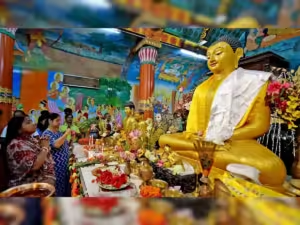
Buddha Jayanti is a significant cultural and religious festival celebrated by Buddhists worldwide. In Nepal, it marks the birth, enlightenment, and death of Lord Buddha, who is revered as the founder of Buddhism. This festival is observed on the full moon day in the month of Baisakh (April/May), reflecting the deep-rooted cultural heritage and the peaceful teachings of Buddhism.
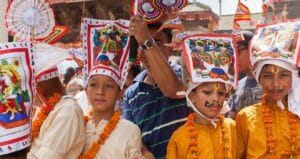
Gai Jatra, or the Cow Festival, is a vibrant Newar festival celebrated predominantly in the Kathmandu Valley. This unique festival commemorates deceased loved ones and is marked by processions and rituals that blend humour with remembrance. Traditionally observed in August or September, Gai Jatra allows families to celebrate the lives of those who have passed away and to seek blessings for their journey in the afterlife.
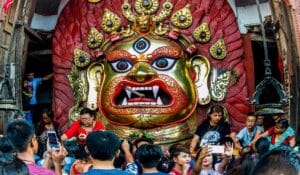
Indra Jatra is a significant and vibrant festival celebrated in Kathmandu. It honours the living goddess Kumari and pays tribute to Indra, the god of rain. This festival reflects the rich tapestry of Nepalese culture and spirituality. It typically takes place in September and spans several days, showcasing a unique blend of religious devotion, cultural rituals, and traditional festivities.
Regional and Ethnic Festivals
This section will cover festivals unique to specific regions and ethnic communities.
Maghe Sankranti is a significant festival celebrated in Nepal. It marks the winter solstice and the beginning of longer days. This festival is trendy among the Tharu, Brahmin, and Chhetri communities, symbolising the transition from the cold winter months to the warmer days of spring.

Chhath Puja is a significant festival celebrated predominantly in the Terai region of Nepal, particularly among the Mithila community. This festival is dedicated to the Sun God (Surya) and his wife, Chhathi Maiya, symbolising the importance of nature, family, and gratitude for life’s blessings.
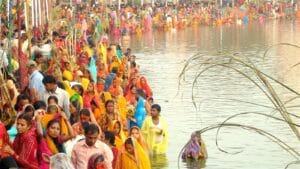
Lhosar, or Tibetan New Year, is a vibrant and culturally significant festival celebrated by Nepal’s Sherpa, Tamang, and Gurung communities. Each ethnic group observes Lhosar at different times of the year, reflecting this festive occasion’s diverse traditions and customs.
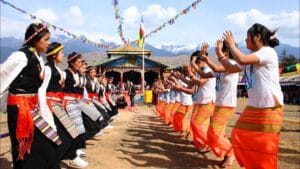
Secular and Cultural Festivals
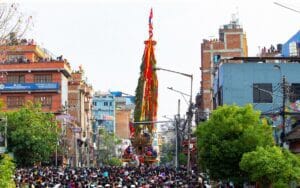
Rato Machhindranath Jatra is one of the oldest and most revered festivals in the Kathmandu Valley. This chariot procession honours Machhindranath, the rain god, and is vital to Newar culture.
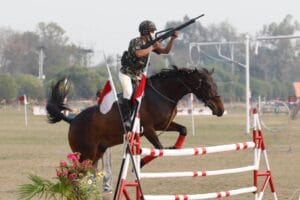
Ghode Jatra, or the Horse Racing Festival, is a traditional Kathmandu celebration known for its lively horse races and various cultural performances. This festival has deep roots in the Newar community and is held to ward off evil spirits.
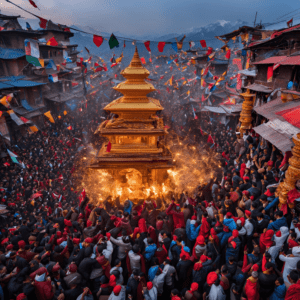
The Nepalese New Year, also known as Bikram Sambat New Year, is celebrated in Nepal as a time for renewal, reflection, and celebration. This festival marks the start of the new year in the Bikram Sambat calendar, approximately 57 years ahead of the Gregorian calendar.
Unique Elements of Nepali Festivals
Animal Worship
Animal worship is a significant aspect of many Nepali festivals, showcasing the country’s reverence for nature and the animal kingdom. In festivals like Tihar, crows, dogs, and cows are honoured and celebrated. During Tihar, crows are fed and worshipped as messengers of death, while dogs are revered for their loyalty, adorned with garlands, and fed delicious treats. Cows, considered sacred in Hinduism, are celebrated for their contribution to agriculture and daily life, often decorated and worshipped throughout the festival.
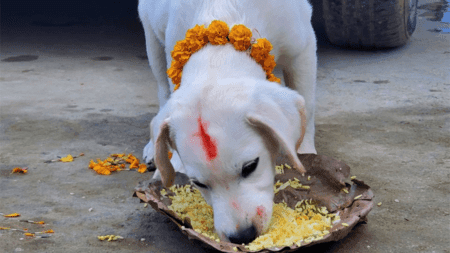 | 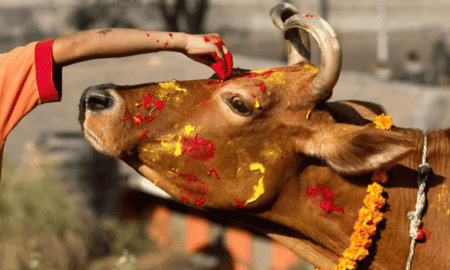 | 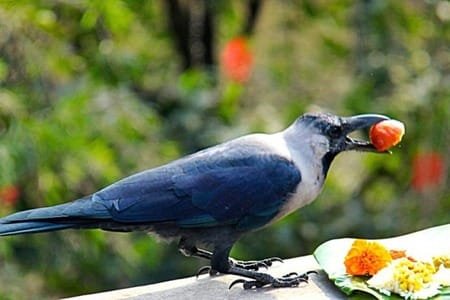 |
In Gai Jatra, the cow plays a central role in honouring the deceased. Families lead cows through the streets, believing that this helps guide the souls of their loved ones to the afterlife. This unique aspect of festivals highlights the deep cultural connections between the Nepali people, their spiritual beliefs, and their respect for animals.
Living Goddess Tradition
The tradition of the Kumari, or living goddess, is another unique element of Nepali festivals, particularly prominent during Indra Jatra. The Kumari is a prepubescent girl selected from the Newar community and is worshipped as the physical embodiment of the goddess Taleju. During Indra Jatra, the Kumari is paraded through the streets of Kathmandu in a beautifully decorated chariot, accompanied by traditional music, dance, and colourful processions.

Her presence signifies the community’s reverence for divine femininity and spiritual protection. The festival also symbolises gratitude towards the goddess for ensuring a good harvest and blessings for the community. This tradition is unique to Nepal and plays a vital role in the cultural identity of the Newar people.
Rituals and Symbolism
Nepali festivals are rich in rituals and symbolism, reflecting the people’s cultural and spiritual beliefs. Offerings made during these festivals, such as tika (a mixture of rice, yoghurt, and vermillion), jamara (barley grass), flowers, and oil lamps, carry deep meanings.

- Tika is often applied to the forehead as a sign of blessing and protection, especially during festivals like Dashain and Tihar.
- Jamara symbolises prosperity and is planted in homes and temples, signifying growth and abundance.
- Flowers and oil lamps, frequently seen in celebrations like Tihar and Maha Shivaratri, represent purity, enlightenment, and the dispelling of darkness.
These rituals foster a sense of community, continuity, and spirituality, allowing individuals to connect with their cultural heritage while participating in the collective joy of festivals.
Experience for Tourists
Cultural Immersion
Nepal’s festivals offer a unique opportunity for tourists to immerse themselves in the country’s vibrant cultural traditions. Participating in local celebrations allows visitors to witness the rich diversity of Nepali culture firsthand. Tourists can join the colourful processions, witness traditional music and dance performances, and even participate in rituals. Festivals like Dashain, Tihar, and Holi provide a lively atmosphere where visitors can engage with local communities and experience the warmth and hospitality of the Nepali people.
For example, during Dashain, tourists can observe family reunions and rituals, including applying tika and celebrating victory over evil. Similarly, in Tihar, visitors can partake in the festivities honouring animals, experiencing the unique cultural significance of each ritual.
Festivals as a Travel Attraction
Timing a trip to Nepal to coincide with significant festivals can enhance the travel experience significantly. Festivals are a vital tourist attraction, offering a chance to witness cultural practices that may not be present at other times of the year. Events like Buddha Jayanti in Lumbini or Indra Jatra in Kathmandu showcase Nepal’s vibrant heritage and draw local and international crowds.
Travel agencies often organise special tours that align with these festivities, ensuring that tourists can engage in authentic cultural experiences. This approach enriches the travel itinerary and supports local communities by encouraging tourism during these peak celebration periods.
Etiquette for Visitors
To participate respectfully in religious ceremonies and community events, tourists should be mindful of local customs and etiquette. Here are some guidelines for respectful participation in Nepali festivals:
- Dress Modestly: Wearing appropriate clothing is essential, particularly in religious settings. It is advisable to cover shoulders and knees as a sign of respect.
- Ask for Permission: Always ask for permission before taking photos, especially of people or rituals. Some customs may not allow photography, so being aware is crucial.
- Participate Respectfully: Engage in rituals and traditions with respect. If invited to join, do so with genuine interest and appreciation for the cultural significance behind the practice.
- Be Mindful of Alcohol: Many festivals have religious undertones, so it’s best to avoid consuming alcohol in these settings unless it is part of the local custom.
- Show Gratitude: Expressing gratitude towards hosts and community members enhances the experience and builds goodwill.
Recap and Conclusion
Nepal’s festivals are a vibrant tapestry that reflects the country’s rich cultural diversity and deep-rooted traditions. From the grand celebrations of Dashain and Tihar to regional observances like Lhosar and Chhath Puja, each festival showcases unique rituals and customs integral to the identity of the various communities within Nepal. These festivals provide a glimpse into the religious practices of Hinduism and Buddhism and highlight the country’s indigenous traditions, fostering a spirit of unity and social harmony among different ethnic groups.
Moreover, festivals are crucial in preserving Nepal’s cultural heritage and passing down traditions from generation to generation. They serve as platforms for families and communities to unite, reinforcing social bonds and a sense of belonging. For tourists, experiencing these festivals offers an unparalleled opportunity to engage with the local culture, enhancing their understanding of Nepal’s history and values.
In essence, the festivals of Nepal are not just celebrations; they are vital expressions of the country’s cultural legacy that continue to thrive in today’s world. As they bring people together, they reinforce the importance of mutual respect and understanding in a diverse society, making them an essential aspect of Nepal’s social fabric.

 Member of
Member of